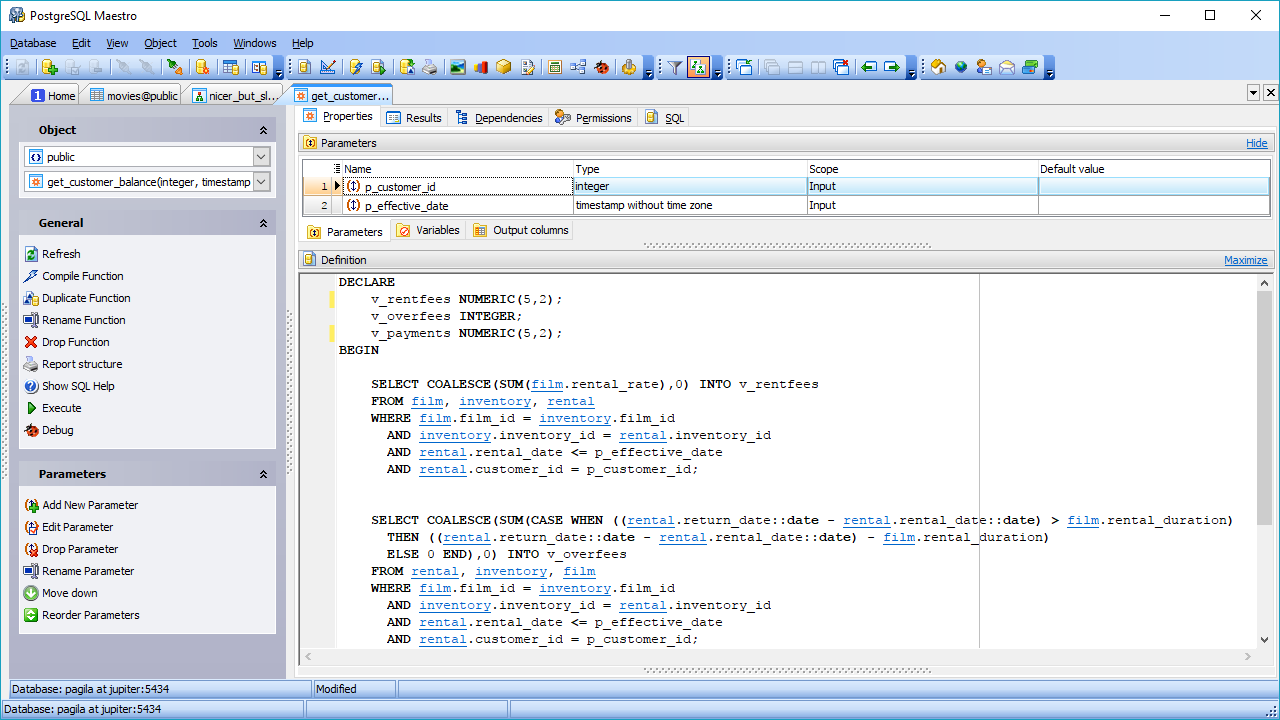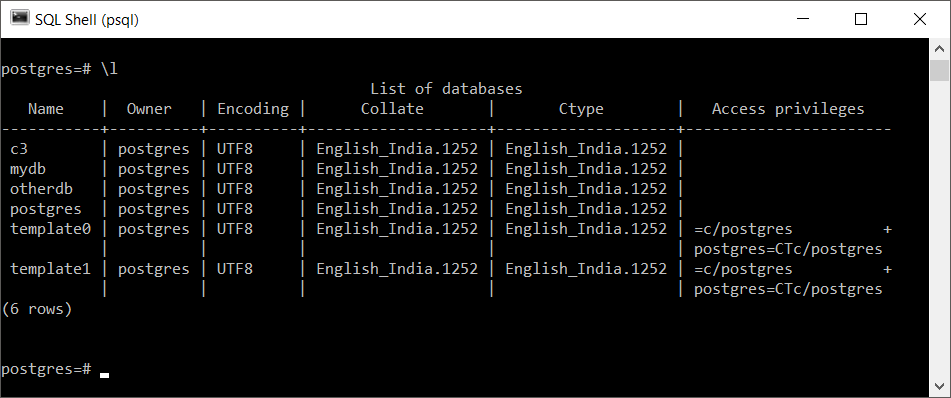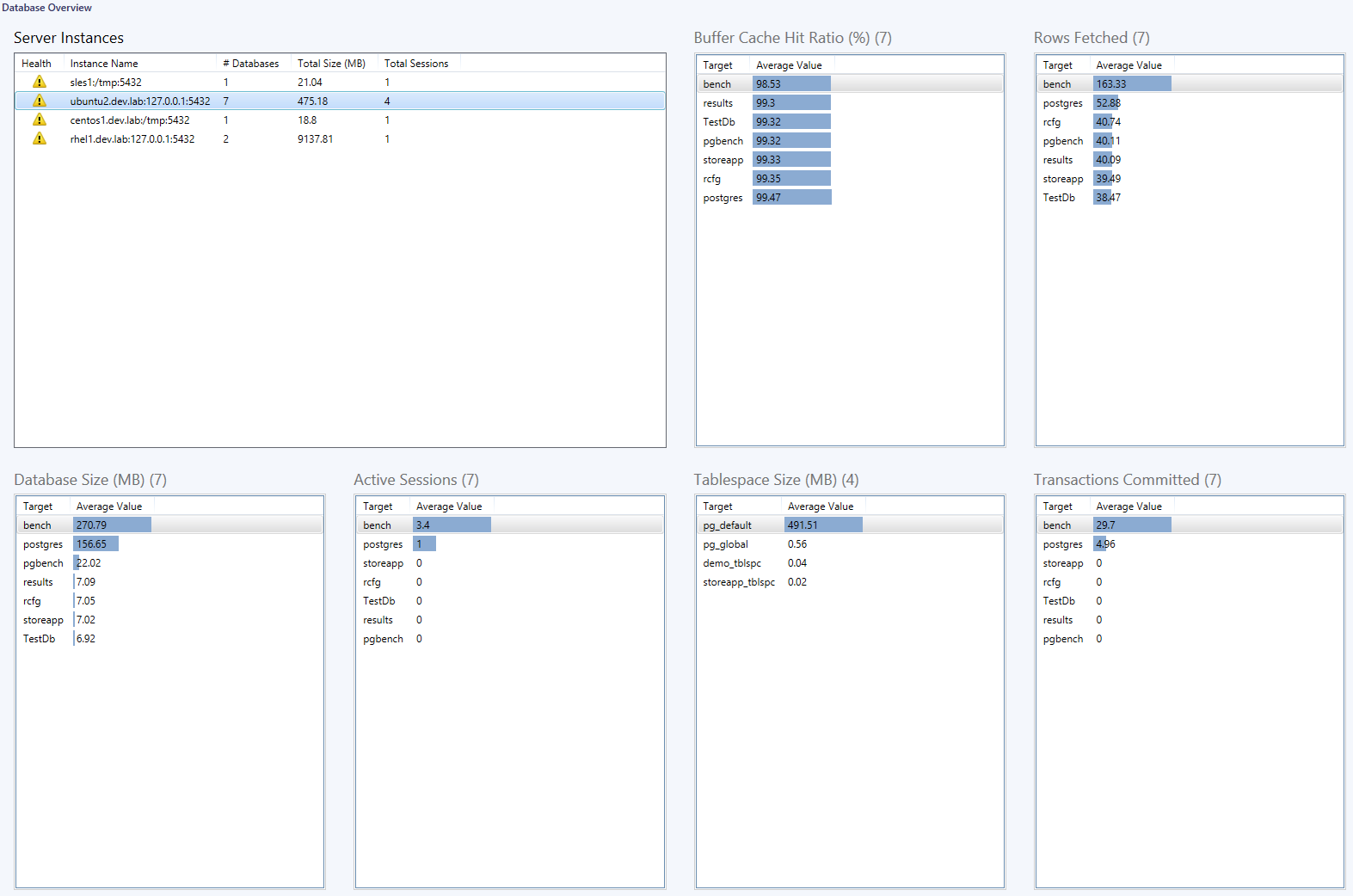
- #Postgresql list databases how to
- #Postgresql list databases full
- #Postgresql list databases password
- #Postgresql list databases windows
Template0 | postgres | UTF8 | en_US.UTF-8 | en_US.UTF-8 | =c/postgres + Postgres | postgres | UTF8 | en_US.UTF-8 | en_US.UTF-8 | Markets | tom | UTF8 | en_US.UTF-8 | en_US.UTF-8 | Visitor | tom | UTF8 | en_US.UTF-8 | en_US.UTF-8 | Name | Owner | Encoding | Collate | Ctype | Access privileges To get a list of all databases: postgres=# \l Some of these databases (and the tables within) are updated automatically by PostgreSQL as you use them. A database is a set of tables, information about those tables, information about users and their permissions, and much more.

What most people think of as a database (say, a list of customers) is actually a table. You’ll get help on just that item: Command: DROP TABLEĭROP TABLE name For example, to get help on DROP TABLE:.You can get help on a particular item by listing it after the \h command. Press space to continue, or q to stop the output.You type backslash, the letter q, and then you press the Enter or return key.
#Postgresql list databases how to
Quitting pqsqlīefore we learn anything else, here’s how to quit psql and return to the operating system prompt. You’ll use psql (aka the PostgreSQL interactive terminal) most of all because it’s used to create databases and tables, show information about tables, and even to enter information (records) into the database.
#Postgresql list databases password
# Password when asked is csizllepewdypieiib $ psql -U doadmin -h production-sfo-test1-do-user-4866002-0.db. -p 25060 -d mydb I think DO generated this for me, or maybe PostgreSQL. # -d is the name of the database to connect to. # -p is the port where the database listens to connections. # -U is the username (it will appear in the \l command) # -h is the name of the machine where the server is running. This worked to connect to Postgres on DigitalOcean
#Postgresql list databases windows
On Windows it might look like C:\Program Files\PostgreSQL> but Windows prompts are also configurable. Prompts are configurable so it may well not look like this. The $ starting a command line in the examples below represents your operating system prompt. The user name and password for your PostgreSQL databaseĬommand-line prompts on the operating system.Inserting several records at once (INSERT INTO)Īdding only specific fields from a recordĭoing a simple query–get a list of records (SELECT) \d and \d+ Display columns (field names) of a table Starting and quitting the psql interactive terminal It covers the most common operations and shows them roughly in sequence,Īs you’d use them in a typical work session.
#Postgresql list databases full
This section isn’t a full cheat sheet for psql. Knowing how to perform these operations on the command line means you can script them,Īnd scripting means you can automate tests, check errors, and do data entry on the command line. You can do some of them through a visual user interface, but that’s not covered here. Many administrative tasks can or should be done on your local machine,Įven though if database lives on the cloud. You can follow through the examples and the output is shown as if youĭid type everything out. If you don’t have access to a live PostgreSQL installation at the moment we still have your back.


Uses psql and you want to learn the absolute minimum to Now what? I assume you’ve been given a task that

To exit from the database, you can use the command \q.Postgres psql command line tutorial and cheat sheet You are now logged into PostgreSQL testdb and ready to execute your commands inside testdb. Psql -h localhost -p 5432 -U postgress testdb You can select your database from the command prompt itself at the time when you login to your database. You are now connected to database "testdb" as user "postgres". Now, type the following command to connect/select a desired database here, we will connect to the testdb database. Template1 | postgres | UTF8 | C | C | =c/postgres + Template0 | postgres | UTF8 | C | C | =c/postgres + You can check the available database list using \l, i.e., backslash el command as follows − You can select the database using either of the following methods −Īssume you have already launched your PostgreSQL client and you have landed at the following SQL prompt − Assume that we have already created a database in our previous chapter. This chapter explains various methods of accessing the database.


 0 kommentar(er)
0 kommentar(er)
